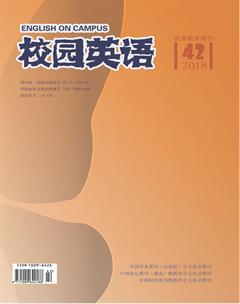An Analysis of Daisy Buchanan in The Great Gatsby
【Abstract】Daisy is an attractive though shallow and self-absorbed woman. She is the wife of Tom Buchanan and the lover of Gatsby. Her choice between Gatsby and Tom is one of the central conflicts in the novel. Daisy is believed to have been inspired by Fitzgeralds own youthful romances with Ginevra King. As a typical female character, the story of Daisy can be reinterpreted from the perspective of feminism and archetype.
【Key words】Daisy; Woman; Feminism; Archetype
【作者簡介】魏晨阳,郑州航空工业管理学院。
In 1925, Fitzgerald published The Great Gatsby, considered great work. Although it initially met with little commercial success, this novel about the American dream of material success has become one of the most popular widely read and critically acclaimed works of fiction in American literature. Daisy Buchanan is a key character in The Great Gatsby. She has become associated with wealth, victims of marital affairs, and glamor. She is beautiful, enchanting, but hollow. Her voice sounds full of money. As a member of secret society of establish wealth, she is the ideal lover of Gatsby. Emma Gray of The Huffington Post wrote of Daisy, “As F. Scott Fitzgeralds twisted 1920s version of a manic pixie dream girl, The Great Gatsby antiheroine has become one of the most discussed and polarizing female characters in American literature.”
1. The Feminist View of Daisy in The Great Gatsby
1.1 Her suffocating marriage with Tom/Gatsbys strong possessive desire. Daisy, in fact, is more victim than victimizer: she is victim first of Toms cruel power and infidelity, but then of Gatsbys increasingly depersonalized vision of her. Just as Gatsby, she is also the living example of the American Dream. Using elements of irony and tragic ending, the story criticizes the American Dream and the indifference and hypocrisy of upper class.
1.2 The explanation of car accident from Daisys point of view. Daisys irresponsible behavior comes from her strong self-responsible sense. The two victims of car accident: Myrtle and Gatsby, one wants to replace her, while the other wants to possess her. When Daisy realized she was threatened, she had no choice but to take action to defend herself: kill Myrtle and indirectly get rid of Gatsby.
1.3 A book is written/ narrated/by a male/ tells a story about a male. “The book contains no important woman character and women control the fiction market.”Nicks judgment of Daisy proceeds from the same desire to have his broken world in uniform and at a sort of moral attention forever. He intends to abstract women into objects of selfish wish-fulfillment. And Daisy is victimized by a male tendency to project a dehumanizing image on woman. So the narrative of Nick is not detached. Fitzgeralds golden girls are scapegoats for male disappointments because “even the poorest male gains something from a system in which all women are at some level his subjects.”
1.4 Women in the Jazz Age—victims of material society. The Great Gatsby gives a vivid picture of the superficial prosperity and ethical degradation of the 1920s,the Jazz Age,the disillusion of the American dream and the crisis of value. The story is also a tragedy of Daisy,who,in such a hypocritical pleasure-seeking and money-worshipping patriarchal society,has to play a role of parasite and decorative object of men,leading a life of emptiness,selfishness meaningless and spiritual void, thus end up with the destruction of herself and others.
2. The Archetype of Daisy (from Fitzgeralds Life Experience)
Several critics have noted that Daisy has been drawn from two women in F. Scott Fitzgeralds life—his early lost love, Ginevra King, and Zelda Sayre, who of course became his wife. Fitzgerald himself indicated on the endpaper that he based his description of Daisys wedding on “memories of Ginevras wedding.” Fitzgerald brought to the novel “His resentment over losing Ginevra King and almost losing Zelda Sayre (who combined are Daisy Fay)”.
3. The Biblical Archetype of Daisy in The Great Gatsby
The character, Daisy, is a parody of Judas in the Bible. Her betrayal of Gatsby corresponds with the betrayal of Judas. The conspiracy between Daisy and Tom around the table (the last supper). Judas betrayed Jesus for money and Daisy is also a moneygrubber.
References:
[1]Judith,Fetterley.The Resisting Reader:A Feminist Approach to Modern Fiction[M].Bloomington:Indiana University Press,1972:16.
[2]Cumutt,Kirk.The Cambridge Introduction to F Scott Fitzgerald[M].Cambridge:Cambridge University Press,2007:74.
[3]Richard D.Lehan.F.Scott Fitzgerald and the Craft of Fiction[J]. 1966:61.
[4]楊双菊.The Destructive Mistletoe of the Jazz Age[J].Literary Theory,2009(9).
[5]Gray, Emma.“Daisy ‘Great Gatsby:9 Opinions About Fitzgeralds Ms. Buchanan”[J].The Huffington Post,2013(5).

